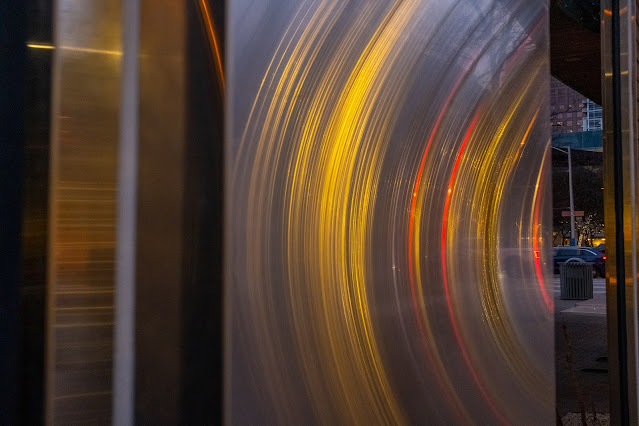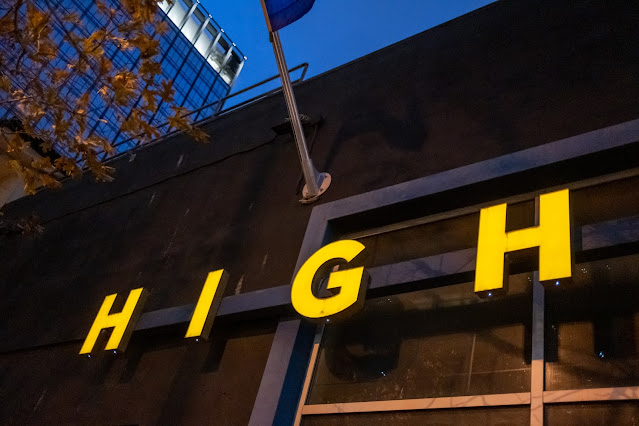On Congress Ave.
I watered small trees and plants today and took an inventory of what's gone from the dramatic freeze and which ones appear to be coming back to life. The two Japanese maples look fabulous, the sage is popping some green leaves out from under the brown stuff and the lantana had already been cut back and dormant. It's hardy; I think it will survive. Just this week everything that survived is splashing out green everywhere it a flora celebration of Spring.
A couple of weeks ago I booked my first "full size" commercial project of the year. It feels so weird just to write that...
I figured it's safe as it's with a client that makes incredibly complex medical testing gear and they've proven themselves in the recent past to be incredibly careful about Covid-19, and diligent in all aspects of prevention. I might not have been as happy to accept the job if I hadn't already factored in the fact that I'd be fully vaccinated + a week out by the time the day of the job arrives.
We'll be photographing six different models in a classic advertising fashion. Each person will be featured in an ad, individually. They'll be expressing an "over the top" emotional reaction (joy? happiness? surprise? elation?) toward a new product. Each ad will feature only one talent, and that's also the way we'll schedule them and photograph them. One at a time.
The images I take will need to have the backgrounds dropped out so the client can composite each selected image with a trademark background. I'll do the dropouts/Photoshop selections of the final images and deliver them to the client as large, layered Tiff files. To make the object selection process most efficient I'm going to photograph each person against a green screen background. I originally planned to shoot against a white background but the comprehensive layouts show each talent with a white lab coat and I know from experience that separating a white lab coat from a white background is harder than it needs to be.
I'm happy this isn't a video project because I can create an optimum green screen set up for vertical still photography with a simple and inexpensive eight foot by ten foot, fabric green screen. And I already have one in stock. If we were shooting video I'd need a much wider screen to conform to the aspect ratio of the frame.
I've practiced with green screens for years now and my secret weapon against the background color contaminating the foreground object is to do a subtle back light with a magenta filter (30M) on it. The filtered light is pretty effective in neutralizing any sort of wraparound or contamination.
I've been photographing set ups like this lately with LED lights but I think the talents are going to be fairly kinetic and I'd like to freeze their motion entirely and get ultra-sharp images of them while using middle-to-smaller apertures like f8.0 and f11. In the shoot I did with Jaston Williams in late October of last year I used LEDs but Jaston was portraying specific characters and would get an expression and a pose just right and then freeze while I shot. Working with the LEDs in that way meant working at wider apertures, slower shutter speeds and higher ISOs. It worked on his project but on something more mainstream and commercial like this week's project I feel like doing it with electronic flash is safer and will help me get the look I think the client wants.
Working at smaller apertures is helpful when doing Photoshop selections since softer edges are harder to separate convincingly. A good, sharp edge, captured in camera, always seems more realistic in a composite. We can always feather the edges after setting up the composite in layers, if we want, but it's mostly impossible to make soft edges sharper after the fact.
We'll be working in a huge room with high ceilings but the set will actually be relatively small. I'll drop a background behind the talent on a set of background stands and a cross bar and then light the background as evenly as I can with up to four separate flashes. I'll have three more flashes on tap for the actual subject. I'm planning to use a large Octabank as a fill light and a smaller, 32 inch Octabank as a main light. I'll use the final light as an accent. The back lit can be as simple as a hot shoe flash at a quarter power aimed from the background position towards the back of the talent. Since we are not doing full body shots I could actually place the small light directly behind the talent.
I'm working with the same assistant I used on three of the shoots I did in the fourth quarter of 2020. He's careful, safe and an artist with lights. He does much of the lighting design for Zach Theatre as his "real" job. I'm also working with a talented make-up person who will wear a face shield, in addition to a face mask, while working with the talents. She's amazingly good. She'll make the talent and my meager photograph skills look top tier.
I'm excited to be back at work. I feel like I'm opening the steel door on an underground bunker and walking out into the sunshine for the first time in a year. Light at the end of a long tunnel...
For this project I'm using the S1H Panasonic camera. It's got great image quality, the file sizes are manageable and it's the most usable of all my cameras when shooting on very controlled sets. As most of you know I tend to overshoot so the idea of banging away with a 47.5 megapixel camera just didn't seem practical. I'm testing three lenses but no matter which one wins in my tests I'm taking all three along to the shoot. They include the Sigma 65mm f2.0, the Sigma 85mm f1.4 Art lens and the 70-200mm f4.0 Lumix S-Pro zoom. At the last minute I might also add the Sigma Art 70mm Macro lens; it's just so wicked sharp I have to give it a spin....
We'll set up and shoot on a tripod and I'm bringing two Atomos 4K monitors with me. I'll daisy-chain them off the HDMI socket on the camera. I've found that setting up two "client" monitors about 15 feet apart is effective in spreading people out. The product manager can look at one while the art director checks out the other and I get to keep track of everything with the (amazingly good and detailed) EVF on the S1H. It's a nice way to work and much more practical than trying to deal with a camera tethered to a laptop. It's just so much faster.
The clients on this project are great and hospitable. The talents they've selected are NOT crowd-sourced but come from reliable, professional talent agencies. My crew are folks I've worked with for years at the theater. And the gear.... It's just so good.
I'm hoping 2021 is just filled to the brim with projects like this. This is the fun stuff.
But after we do the fun stuff I have to sit here next week and do post production. I guess it's the universe's way of balancing things out...
That's all I've got today. Back to testing everything. More later.


















